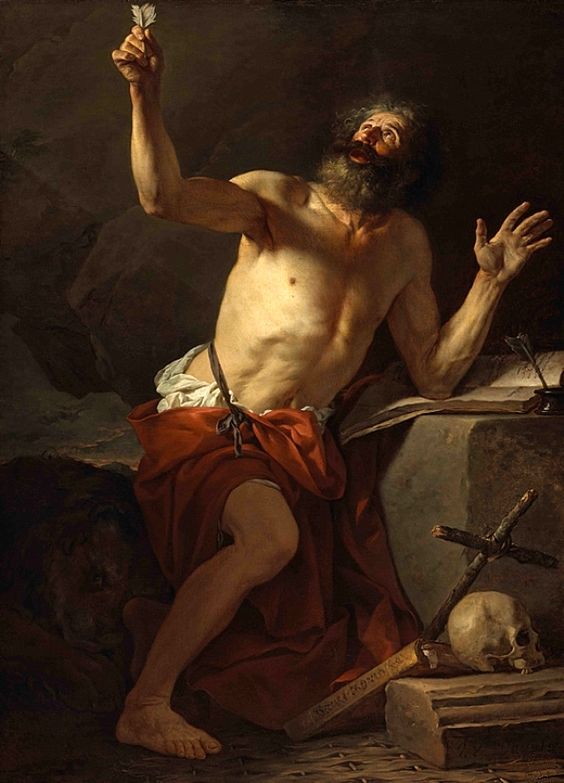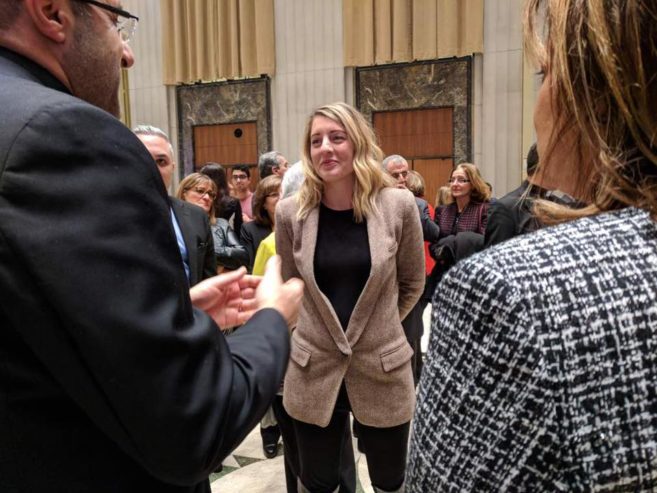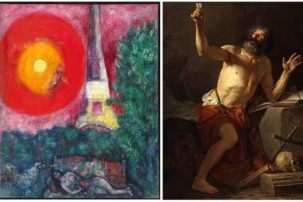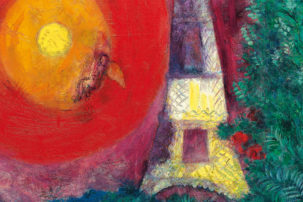Multiple reports are suggesting that the painting the National Gallery of Canada is looking to acquire after its Chagall deaccession sale is Jacques-Louis David’s 1780 canvas Saint Jérôme entendant les trompettes du Jugement dernier (Saint Jerome Hearing the Trumpets of the Last Judgment).
The painting is said to be currently owned by the Notre-Dame de Québec parish in Quebec City.
The National Gallery of Canada originally said that “Proceeds from the [Chagall] sale will be used to purchase an important work that is a part of our national heritage,” but it did not disclose what work that was. (The David has been in the hands of the church in Quebec since the 1920s, which may explain its heritage value.)
It appears that Quebec news agency Agence QMI broke the story on Tuesday, April 10, with a report in the Journal de Montréal. Here is part of that report:
«Il n’y a pas d’entente officielle de conclue, mais c’est vrai qu’on s’est beaucoup parlé. Le Musée des beaux-arts du Canada s’est montré intéressé à faire l’acquisition de l’œuvre, très intéressé», a expliqué, mardi, Mgr Denis Bélanger, curé de la paroisse Notre-Dame de Québec.
Bélanger, a church official, also explained that the painting was originally donated to the Notre-Dame de Québec basilica in 1922. The church is hoping to use sales proceeds to maintain the Notre-Dame-des-Victoires church and Notre-Dame de Québec basilica.
He further noted that the church had also approached the Musée de la civilisation in Quebec City, the Musée national des beaux-arts du Québec and the Musée des beaux-arts de Montréal about purchasing the work.
The Journal de Montreal reported that several approvals would be needed for sale, including the diocese of Quebec and eventually the Vatican.
On Thursday, April 12, Le Devoir followed up with a story which noted that the painting was not in danger of leaving Canada, as National Gallery CEO Marc Mayer had previously implied of the then-mystery acquisition. The Le Devoir story also made the case that the painting should actually stay in Quebec proper, it being a key part of Quebec history in particular.
In the Devoir piece, Musée des beaux-arts de Montréal director Nathalie Bondil (who implies her acquisition budget is roughly $1 million per year, and largely donation-reliant) took the National Gallery of Canada to task for failing, she says, to collaborate on acquiring the piece together, and sharing it between institutions. Here is an excerpt of Bondil’s commentary from the Devoir piece:
« Pourquoi, quand vous avez 8 millions d’argent public pour les acquisitions, vous vendez une oeuvre, un Chagall ? Huit millions, c’est beaucoup ! On est là, conservateurs, pour enrichir les collections, pas pour les vendre », indique celle qui a été à la tête du succès de Chagall : couleur et musique à Montréal, l’exposition la plus visitée du Canada en 2017, avec 300 000 visiteurs.
« C’est une situation totalement inédite », poursuit Mme Bondil. « J’avoue que je ne comprends pas. L’idéal serait de pouvoir conserver un très beau Chagall au MBAC ; de conserver un très beau David de jeunesse — pourquoi pas à trois, à la limite, puisqu’on est déjà deux musées ? – et qu’il y ait une subvention pour la cathédrale Notre-Dame de Québec. Ce serait le scénario idéal. Trouver des façons de conserver le patrimoine d’ici. Il y a peut-être des solutions de collaboration et de transparence pour mettre nos énergies ensemble afin que tout soit préservé sur le sol canadien. »
Essentially, Bondil is arguing that it is irresponsible for the National Gallery to be selling a Chagall to buy a David outright, when there are three institutions available (including the Musée de la civilisation in Quebec City) that could share both the cost and responsibility for the David painting—including a way to keep it not only in Canada, but with a strong foothold in Quebec.
The National Post also followed up with a story on Wednesday, April 11, that notes Toronto investment banker and arts patron Bruce Bailey offered “to help with a fundraising campaign to buy the mystery work without having to sell the Chagall, both because it is a valuable work in its own right, and because selling from the permanent collection can discourage future donations.”
The Post story also includes comment from a curator at the Musée national des beaux-arts du Quebec, a gallery which turned down the painting offer the church made.
Daniel Drouin, curator of early art for the Musée National des Beaux Arts du Québec, said he had spoken with Bélanger about the David painting.
Drouin said this museum would have been very interested to receive the David painting as a donation, but that because it is a European painting and not a Quebec painting, the museum did not have the mandate to purchase it. Even if it did, the museum would not have the budget to buy the painting because of what its valuation would likely be, Drouin added.
All these media outlets noted that the National Gallery of Canada had not replied to requests for comment on their stories.

 A view of Jacques-Louis David's 1780 painting Saint Jérôme entendant les trompettes du Jugement dernier. (Photo: Pinterest.)
A view of Jacques-Louis David's 1780 painting Saint Jérôme entendant les trompettes du Jugement dernier. (Photo: Pinterest.)







